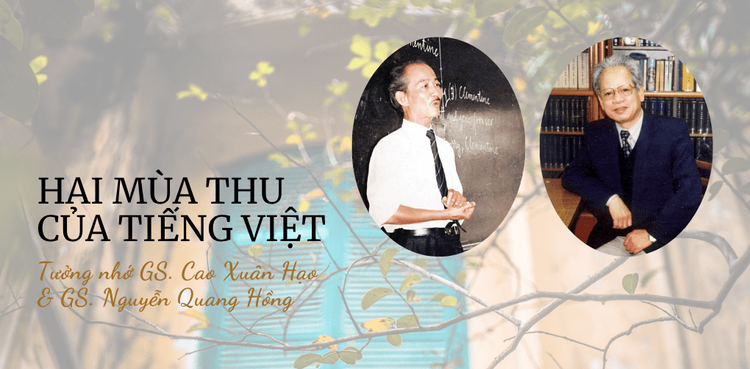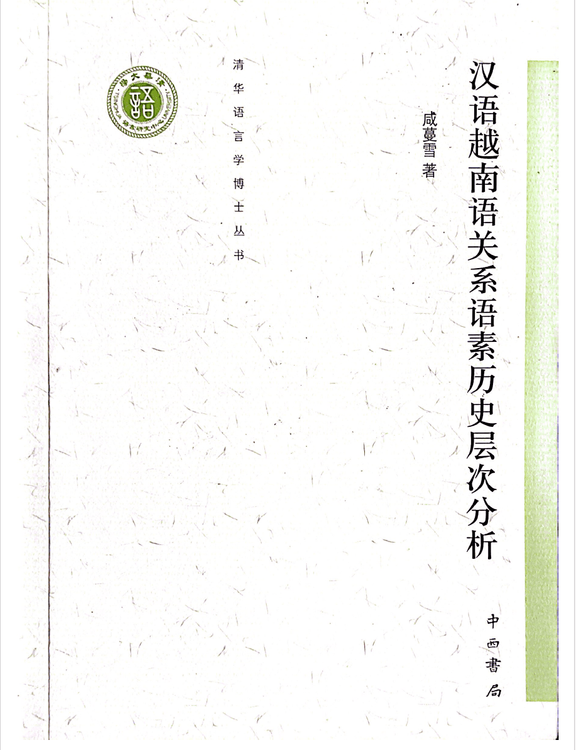Digitizing Việt Nam marks a digital leap forward in Vietnam Studies through a Columbia - Fulbright collaboration, formalized through that began with a 2022 memorandum of understanding between the Weatherhead East Asian Institute and the Vietnam Studies Center. The Digitizing Việt Nam platform began with the generous donation of the complete archive by the Vietnamese Nôm Preservation Foundation to Columbia University in 2018.




Delve into Vietnam's history, culture, and society through cutting-edge tools and curated resources tailored for scholars, students, and educators.
Explore our digital archive dedicated to preserving and academically exploring Vietnam's historical, cultural & intellectual heritage.
Engage creatively with Vietnam Studies — Use Digitizing Vietnam's specialized tools to approach the field with fresh perspectives and critical insight.
Discover and teach Vietnam Studies with impact — Explore curated syllabi, lesson plans, and multimedia resources designed to support innovative and inclusive learning experiences.
Latest news and discoveries from the digital front of Vietnamese heritage.

“Sơn once said, ‘No one can understand the helplessness of this life the way we do.’” Researcher Nguyễn Đắc Xuân (1937–) recalls a late-night conversation with Father Nguyễn Ngọc Lan and musician Trịnh Công Sơn on April 30, 1966, in Đà Lạt. Although it was not his first time meeting Trịnh Công Sơn, the exchange left a deep impression on Nguyễn Đắc Xuân, who at the time was a young man involved in the peace movements initiated by Zen Master Thích Nhất Hạnh.
In Episode 2 of the podcast series “My Trịnh Công Sơn & Ours,” writer, journalist, and researcher Nguyễn Đắc Xuân recounts his encounters with the evolving thought and music of Trịnh Công Sơn, especially from the mid-1960s onward. Recorded at his private home in Huế—surrounded on all sides by bookshelves and archival materials he has collected and compiled over decades, along with portraits of Trịnh Công Sơn painted by contemporary intellectuals and friends—the episode is steeped in the atmosphere of a bygone era, filled with anxieties and uncertainties about the human condition, as well as aspirations and urgent calls for peace amid wartime.
What makes the conversation particularly engaging is the way it weaves together the overlapping paths that individuals chose to walk during those turbulent years. The story of Trịnh Công Sơn cannot be separated from the social context of the time—from the influence of musicians like Phạm Duy, Zen Master Thích Nhất Hạnh, poet Ngô Kha, and others. Researcher Nguyễn Đắc Xuân also reflects on certain differences between the peace movement he participated in and Trịnh Công Sơn’s own anti-war philosophy.
Episode 2 of the podcast series, titled “The Peace Movement and the Songs That Uplift Humanity,’” offers the public a fresh perspective on Trịnh Công Sơn and on the personal journeys of the intellectuals who lived through and witnessed the tragedies of war, yet continued to yearn for the rebuilding of compassion and humanity.
🎧 Listen to the podcast here.

On an autumn day, October 7, 2025, linguist Prof. Dr. Sci. Nguyễn Quang Hồng passed away, leaving in the hearts of Vietnamese scholars an irreparable sense of loss. Eighteen years earlier, also on these autumn days, October 16, 2007, the renowned linguist Prof. Cao Xuân Hạo also departed this world, mourned deeply by his friends, students, and colleagues. Two towering figures of Vietnamese humanities—Cao Xuân Hạo and Nguyễn Quang Hồng—thus both chose the autumn days of humankind to close their earthly journeys. In a quiet and fateful way, autumn has become the season of farewell for two of the greatest minds in modern Vietnamese linguistics. To honor them, this article revisits the essay that Nguyễn Quang Hồng wrote in October 2007, when he reflected on his colleague and elder brother in scholarship, Professor Cao Xuân Hạo.
In that piece, Nguyễn Quang Hồng recalled learning of Cao Xuân Hạo’s passing through a phone call from a young colleague. Though aware of his mentor’s declining health, he was overcome with grief at the realization that he would never again share a conversation with Cao Xuân Hạo. His memory drifted back to 1965, when, fresh from his studies at Peking University, he first met the already accomplished Cao Xuân Hạo. The elder linguist devoted an entire autumn afternoon to explaining his theory of the Vietnamese syllable to the young scholar - a meeting that, as Nguyễn Quang Hồng recalled, revealed that Cao Xuân Hạo was seeking an entirely new way to understand Vietnamese from within its own nature.
According to Cao Xuân Hạo, the Vietnamese syllable is an indivisible whole—a unified phonetic, semantic, and functional unit—and cannot be mechanically divided into “initial, medial, nucleus, and final” parts, as in European phonological models. He called this perspective the theory of non-segmentality, presented most fully in his 1985 work Phonologie et Linéarité (Phonology and Linearity). The book earned high praise from international scholars; several French linguists observed that if speakers of monosyllabic languages such as Vietnamese had developed modern phonology, they would have chosen the syllable—not the phoneme—as its fundamental unit. From Vietnam, Cao Xuân Hạo raised an independent, decolonizing voice that challenged Eurocentric norms in global linguistics.
Beyond phonology, Cao Xuân Hạo ventured into Vietnamese grammar. Rejecting the traditional European “Subject–Predicate” framework, he proposed a “Topic–Comment” structure that better captures the logic of Vietnamese sentences, where the first part introduces the topic and the latter elaborates on it. His book Vietnamese: A Functional Grammar Outline (1991) became a turning point, helping generations of linguists and teachers see Vietnamese not as a distorted version of Western syntax but as a coherent linguistic system in its own right.
In Nguyễn Quang Hồng’s recollection, Cao Xuân Hạo was not only a rigorous theoretician but also a profoundly humanistic intellectual. His knowledge extended far beyond linguistics: fluent in Russian—so well that even native speakers admired him—he also mastered French, English, and Latin, was deeply versed in Chinese linguistics and writing, and translated Russian and French literature into Vietnamese, both precise and lyrical. His essays on language and culture, later collected in Tiếng Việt – Văn Việt – Người Việt (The Vietnamese Language, Literature, and People), brought linguistic thought closer to the general public, showing Vietnamese not merely as a tool of communication but as a cultural heritage worthy of care and pride.
Concluding his 2007 tribute, Nguyễn Quang Hồng wrote that Cao Xuân Hạo passed away peacefully, leaving behind an invaluable legacy for the Vietnamese language. This autumn, as Nguyễn Quang Hồng himself has also left this world, those words echo anew—like a double elegy for two scholars who devoted their lives to affirming the dignity and integrity of Vietnamese: a language that needs no borrowed mirror to be seen, for it is already complete and free in its own being.
Read Hoài niệm về Anh Cao Xuân Hạo by Nguyễn Quang Hồng:
https://ngonngu.net/nqhong_hoainiemvecaoxuanhao/354
Read Tiếng Việt – Văn Việt – Người Việt by Cao Xuân Hạo on Digitizing Việt Nam platform:
https://www.digitizingvietnam.com/en/our-collections/tinh-hoa-van-hoc-va-ngon-ngu-viet-nam/tieng-viet-van-viet-nguoi-viet

Vietnam and China, with their long history of contact, have formed a deep relationship of cultural exchange in which language is one of the most visibly affected areas. For more than two millennia, Chinese has not only served as a vehicle for transmitting culture and thought, but has also left an indelible mark on the structure and vocabulary of Vietnamese. Sino-origin words have penetrated deeply into Vietnamese life and thought, becoming an essential part of the language and enriching and diversifying Vietnamese expression.
The study Hanyu Yuenanyu Guanxi Yusu Lishi Cengci Fenxi (《汉语越南语关系语素历史层次分析》 - “Historical Stratification of Sino-Origin Elements in Vietnamese”) by Assoc. Prof. Dr. Xian Manxue is an in-depth work applying the method of historical phonological comparison to identify, classify, and date when Sino-origin words entered Vietnamese. The research does not stop at the familiar layer of so-called Sino-Vietnamese vocabulary, but also uncovers older layers of borrowings, thereby sketching a vivid and panoramic picture of the history of Han–Viet linguistic contact. This article introduces the main ideas and key findings of that work.
As we know, for many centuries of Vietnamese history, Classical Chinese was used as the official written language. During this period, a large number of Sino-origin words entered Vietnamese, became part of everyday usage, and today are inseparable from modern Vietnamese.
We are familiar with “Sino-Vietnamese words,” that is, words read according to “Sino-Vietnamese readings,” a system of pronouncing Chinese characters based on the phonological system of Middle Chinese in the Tang dynasty, specifically reflecting Chinese of around the 8th century. Examples include: học ‘study’, dân ‘people’, sách ‘book’, văn chương ‘literature’, giáo dục ‘education’, xã hội ‘society’, văn hóa ‘culture’, đạo đức ‘morality’, tình cảm ‘emotion’, gia đình ‘family’, phụ huynh ‘parent’.
However, not all Sino-origin words in Vietnamese belong to this Sino-Vietnamese layer. There are also words like bay ‘fly’, buồn ‘sad’, búa ‘axe’, gương ‘mirror’, ghế ‘chair’, gươm ‘sword’, giếng ‘well’, dao ‘knife’, mùa ‘season’… which at first sound “purely Vietnamese,” but in fact also trace back to Chinese. Their modern forms differ from standard Sino-Vietnamese because they were borrowed very early and became assimilated into Vietnamese; or because they underwent long-term “Vietnamization” after borrowing; or because they entered through spoken contact rather than through the written/literary channel. These words are crucial for tracing the oldest layers of Han–Viet contact.
These items preserve information about historical phonology and carry traces of Sino–Vietnamese cultural exchange across different periods. Analyzing the relationship between such Vietnamese words and earlier stages of Chinese helps us reconstruct both the linguistic contact history between Chinese and Vietnamese and the cultural exchange between the two societies.
To cover this full range, the study adopts a broader concept: “Sino-origin elements in Vietnamese.” This term refers to all monosyllabic Vietnamese words that show systematic phonological and semantic correspondence to a Chinese form, regardless of which layer they belong to or when they were borrowed. This approach allows for a more comprehensive and systematic view of Chinese influence on Vietnamese.
THE METHOD OF HISTORICAL PHONOLOGICAL COMPARISON: Reconstructing history through sound
Each Sino-origin element—Sino-Vietnamese or non–Sino-Vietnamese—functions like a “fossil pebble,” preserving the phonetic features of the period in which it entered Vietnamese. To decode that historical information, the key method is historical phonological comparison.
We use historical phonological comparison based on the principle of “full correspondence” across three components: initial consonant, rhyme (vowel + coda), and tone, in order to identify Sino-origin elements in Vietnamese, especially those outside the standard Sino-Vietnamese system. In other words, a word is only considered Sino-origin if it shows regular patterned correspondences in all three aspects. This principle prevents arbitrary or accidental comparisons and ensures scientific rigor and reliability.
Then, based on known historical sound changes in both Chinese and Vietnamese, we “stratify” these Sino-origin elements by period—that is, we determine when they were borrowed into Vietnamese.
Some illustrations:
– Initial consonants: The character 斧 ‘axe’ has the Sino-Vietnamese reading phủ, but Vietnamese also has búa ‘axe’. The initial b- in búa reflects an earlier stage before the emergence of an [f]-like initial (ph-) in Chinese, i.e. before the 8th century. Therefore búa is an archaic borrowing. Other items of this type include: buồm (帆 SV: phàm, ‘sail’), buồn (烦 SV: phiền, ‘sad’), buông (放 SV: phóng, ‘let go’), buồng (房 SV: phòng, ‘room’), bùa (符 SV: phù, ‘talisman’), bay (飞 SV: phi, ‘fly’).
– Rhymes: The character 惜 ‘to regret’ has the Sino-Vietnamese reading tích, but Vietnamese also has tiếc ‘to regret’. The rhyme correspondence -ích ~ -iếc reflects an older stage. Other pairs include: biếc (碧 SV: bích, ‘azure’), tiệc (席 SV: tịch, ‘banquet’), chiếc (只 SV: chích, ‘classifier for single items’), thiếc (锡 SV: tích, ‘tin’), việc (役 SV: dịch, ‘work, task’), giêng (正 SV: chinh, ‘first month’).
Using this procedure, the study identifies 3,938 Sino-origin elements, of which 1,012 lie outside the standard Sino-Vietnamese reading system—that is, very early borrowings or forms that have been strongly reshaped. According to historical sound change patterns, these are assigned to four main strata:
– Archaic (Qin–Han period);
– Early Medieval (late Eastern Han to early Tang);
– Late Medieval (mid-Tang to Five Dynasties);
– Later / Early Modern and after (from the 10th century onward). (These labels follow traditional periodization in Chinese historical linguistics.)
Analyzing how these elements are distributed across time helps us sketch an overall history of Sino–Vietnamese language contact.
3.1 Qin–Han period: First contact
Han–Viet linguistic contact begins here. 386 items belong to this earliest layer. Especially in the mid-to-late Eastern Han, many scholars from the Central Plains migrated south to escape turmoil. The historical figure Sĩ Nhiếp (Sĩ Vương) is often credited with promoting Han culture in the region. Historical sources note that he opened schools, used canonical texts from the north, glossed and explained them, and taught local people—evidence that aligns with what we see linguistically.
3.2 Early Medieval period (late Eastern Han to early Tang)
By this stage, there are already semantic clusters, suggesting contact on a meaningful scale.
Color terms: Many Vietnamese color words derive from Chinese: hồng (红 ‘red’), vàng (黄 ‘yellow’), xanh (青 ‘blue/green’), tía (紫 ‘purple’), cam (柑 ‘orange’), biếc (碧 ‘bright blue/green’). Notably, vàng, tía, biếc belong to this Early Medieval layer. The word xanh in Vietnamese can mean both ‘green’ and ‘blue’, mirroring the older semantic range of 青 qīng in Classical Chinese. The well-known saying 青出于蓝而胜于蓝 (“Blue/green comes from indigo but surpasses indigo”) reflects this older linkage between shades of green and blue within 青. Vietnamese xanh preserves that ancient semantic field.
3.3 Late Medieval period
This is the peak of large-scale, structured Han–Viet contact and the period that gave rise to the Sino-Vietnamese reading system. Most of the 3,938 Sino-origin elements belong to this layer. As shown by Nguyễn Tài Cẩn, borrowings from the mid-Tang era provided the foundation for the Sino-Vietnamese readings that later became standard.
From the 10th century onward, after Vietnam entered an era of political independence, linguistic self-consciousness encouraged the development of a distinct national language. The Sino-Vietnamese reading system was gradually absorbed into the internal sound structure of Vietnamese and continued to evolve according to Vietnamese phonological rules. Sino-Vietnamese words became organically embedded in Vietnamese and to this day remain productive for forming new terms to express modern concepts, e.g. nhiệt kế ‘thermometer’, khí quyển ‘atmosphere’, vi mô ‘micro-’, vĩ mô ‘macro-’, thị trường ‘market’, công ty ‘company’, công nghệ cao ‘high technology’, toàn cầu hóa ‘globalization’.
3.4 From the 10th century onward
Even after independence, contact did not end. Literary Chinese continued to feed new borrowings. At the same time, continuing waves of migration from southern Chinese regions (Cantonese, Teochew, Hokkien, etc.) introduced new Sino-origin words via spoken channels, especially in southern Vietnam. Words such as xá xíu (barbecued pork), hủ tiếu (rice-noodle soup), lẩu (hotpot), quẩy (fried cruller), xì dầu (soy sauce), sa tế (satay-style chili paste), bò bía (spring rolls) are vivid examples. These forms are colloquial, culinary, and everyday in flavor—quite different from the elevated, classical tone of formal Sino-Vietnamese vocabulary.
In short, studying how these Sino-origin layers are distributed over time gives us a powerful way to reconstruct the linguistic history of Han–Viet contact.
NEW INSIGHTS FROM THE FINDINGS
4.1 “Sino-Vietnamese readings”: a historically layered system
One key finding is that the Sino-Vietnamese reading system is not a single homogeneous block created all at once. Rather, it is historically layered. Sino-Vietnamese forms appear across all four strata: 37 items in the Archaic layer, 256 in the Early Medieval layer, most in the Late Medieval layer, and 10 in the Later/Early Modern layer. This shows that some very old borrowings were never replaced by later “standard” Tang-era readings; they persisted into what we now consider Sino-Vietnamese. Examples include: nghĩa (义 ‘meaning’), địa (地 ‘earth’), thìa (匙 ‘spoon’), thuộc (属 ‘to belong’), tý (子, calendrical cycle), bính (丙, calendrical cycle), đóa (朵 ‘classifier for flowers’).
4.2 “Vietnamization” does not always mean “modified Sino-Vietnamese”
Traditionally, many forms that differ from standard Sino-Vietnamese readings have been explained as “Sino-Vietnamese that later got localized.” However, stratification shows a different reality: many such words—gương ‘mirror’ (镜), gươm ‘sword’ (剑), ghế ‘chair’ (几), ghi ‘to record’ (记), gần ‘near’ (近), dừng ‘to stop’ (停), giếng ‘well’ (井)—were in fact borrowed very early, before the Sino-Vietnamese system crystallized. They are not “later distortions” of Sino-Vietnamese; they are older borrowings that preserve pre–Sino-Vietnamese phonology. Calling them “Vietnamized Sino-Vietnamese” obscures their true historical depth.
SIGNIFICANCE OF THE STUDY
This study is not only for linguists; it speaks to anyone interested in the origins of Vietnamese and the broader history of Vietnamese culture.
– Clarifying the history of Vietnamese: By extracting and decoding the historical information embedded in Sino-origin vocabulary, we gain a more concrete and nuanced understanding of how Vietnamese has received, filtered, and naturalized external elements across different eras.
– Supporting teaching and learning: For learners of both Vietnamese and Chinese, understanding historical sources, etymological connections, and regular sound correspondences helps organize vocabulary in a systematic, intellectually coherent way.
– Contributing to interdisciplinary research: Language is a faithful record of history and culture. By dating borrowings, we obtain valuable evidence to verify, supplement, and illuminate historical events and the long, layered process of Sino–Vietnamese cultural exchange spanning more than two thousand years.
CONCLUSION
Sino-origin vocabulary is a structural component of Vietnamese, contributing to its richness, nuance, and expressive flexibility. Tracing the origins and development of these elements does more than clarify the linguistic past; it gives us a clearer view of the diversity and vitality of Vietnamese today.
Through the lens of historical phonological comparison, the work of Assoc. Prof. Dr. Xian Manxue lifts the veil of time and reveals the living record of deep cultural contact between Vietnam and China—a relationship inscribed, with great subtlety and persistence, into the languages of both peoples. Language here is not only a tool of communication, but a historical witness, a cultural bridge, and a shared heritage that deserves ongoing study and care.